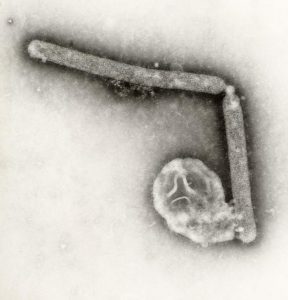By NewsDesk @bactiman63
For the first time in a year and a half, a confirmed human case of avian influenza A(H5N1) has been reported.

Image/Cynthia Goldsmith/ Jackie Katz
The case involves a one-year-old girl from Salavan, aka Saravane province, in the south of the Lao People’s Democratic Republic (Laos). She became sick on Oct. 13 and has since recovered and been discharged.
She had a history of poultry exposure or live poultry near her home before the onset of disease.
The last human H5N1 avian flu case was reported in Nepal in May 2019.
A total of 862 cases of H5N1 influenza have been notified in 17 countries worldwide since 2003. Egypt, Indonesia, and Vietnam have been notified as the most countries. So far, a total of 455 cases have died, with a fatality rate of 52.8%.
China reports 7th human H9N2 avian influenza case of 2020
According to the World Health Organization (WHO), H5N1 is a type of influenza virus that causes a highly infectious, severe respiratory disease in birds called avian influenza (or “bird flu”). Human cases of H5N1 avian influenza occur occasionally, but it is difficult to transmit the infection from person to person. When people do become infected, the mortality rate is about 60%.
Almost all cases of H5N1 infection in people have been associated with close contact with infected live or dead birds, or H5N1-contaminated environments. The virus does not infect humans easily, and spread from person to person appears to be unusual.
H5N1 influenza vaccine, AUDENZ™, receives FDA approval
Indonesia reports H5N1 avian influenza death
Two human H5N1 avian influenza cases reported in Egypt
H5N1 influenza vaccine, deltaFLU, induced a superior antibody response
African swine fever reported in Saravane province, Laos

